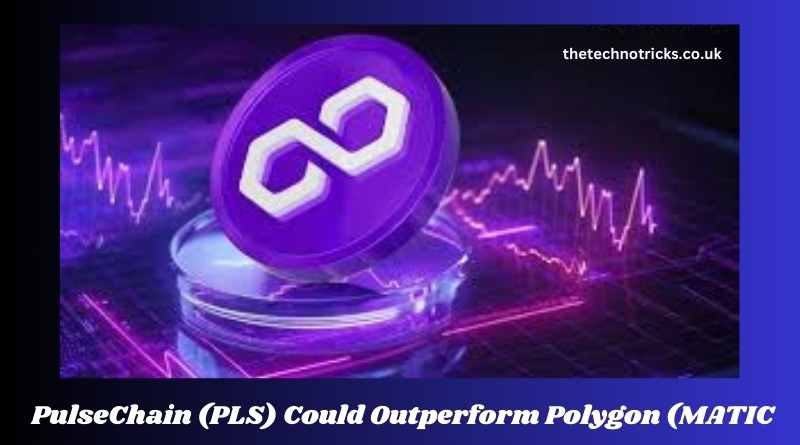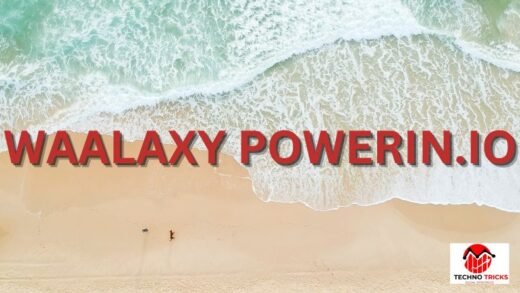Why PulseChain (PLS) Could Outperform Polygon (MATIC): A Comprehensive Comparison
The cryptocurrency space is crowded with innovative projects, each striving to solve the inherent issues of existing blockchain networks. Among these, PulseChain (PLS) and Polygon (MATIC) stand out as two significant players, both aiming to enhance scalability, reduce transaction fees, and provide more efficient smart contract solutions. While Polygon has been a leader in scaling solutions for Ethereum, PulseChain, a relatively new entrant, is quickly gaining traction and could potentially outperform Polygon. This article provides a comprehensive comparison of PulseChain and Polygon, highlighting why PulseChain might have the edge in the long term.
Understanding the Core Differences Between PulseChain and Polygon
Before diving into why PulseChain might outperform Polygon, it’s essential to understand the core differences between these two blockchain platforms. Each has unique features, operates differently in the market, and caters to varying needs within the crypto ecosystem.
PulseChain’s Unique Features
PulseChain is a fork of Ethereum designed to address some of the most pressing challenges facing the blockchain industry today, including scalability, high transaction fees, and network congestion. One of PulseChain’s standout features is its deflationary model, where a portion of every transaction fee is burned, reducing the total supply of PLS tokens over time. This deflationary mechanism is designed to increase the scarcity of PLS, potentially driving up its value as demand grows.
Another unique feature of PulseChain is its consensus mechanism. Unlike Ethereum, which has transitioned to a Proof-of-Stake (PoS) system, PulseChain employs a more efficient consensus model that aims to provide faster transaction speeds and higher throughput. This efficiency is critical in a market where speed and scalability are paramount to user experience and adoption.
PulseChain also promises to be more environmentally friendly than other blockchains. By optimizing its consensus mechanism, PulseChain reduces the energy consumption typically associated with Proof-of-Work (PoW) blockchains like Bitcoin and Ethereum (before its transition to PoS). This green approach could be a significant draw for environmentally-conscious investors and developers.
How Polygon Operates in the Market
Polygon, formerly known as Matic Network, has positioned itself as a leading Layer 2 scaling solution for Ethereum. It aims to improve Ethereum’s scalability by offering a framework for building and connecting Ethereum-compatible blockchain networks. Polygon’s primary objective is to create a multi-chain ecosystem of Ethereum-compatible blockchains that benefit from Ethereum’s security while being more scalable and efficient.
Polygon operates by using a combination of Proof-of-Stake (PoS) sidechains and Layer 2 solutions, such as Plasma, zk-Rollups, and Optimistic Rollups. These technologies enable Polygon to process transactions faster and at a lower cost than Ethereum’s mainnet. As a result, Polygon has become a popular choice for developers looking to build decentralized applications (dApps) that require high throughput and low fees.
One of Polygon’s most significant advantages is its deep integration with the Ethereum ecosystem. This integration allows Polygon to tap into Ethereum’s vast network of developers, users, and projects, making it easier for dApps to migrate or operate seamlessly between Polygon and Ethereum.
Key Differentiators Between PulseChain and Polygon
While both PulseChain and Polygon aim to improve upon Ethereum’s limitations, they do so in fundamentally different ways, leading to distinct advantages and trade-offs.
- Scalability: Both PulseChain and Polygon enhance scalability, but PulseChain achieves this through its unique consensus mechanism and a more efficient blockchain design, while Polygon relies on Layer 2 solutions that operate on top of Ethereum’s mainnet.
- Transaction Fees: PulseChain’s deflationary model and efficient design aim to offer consistently lower fees, whereas Polygon reduces fees by processing transactions on sidechains or Layer 2 solutions, which still depend on Ethereum’s mainnet to some extent.
- Ecosystem Integration: Polygon’s deep integration with Ethereum is one of its strongest assets, allowing it to leverage Ethereum’s vast developer base and existing projects. In contrast, PulseChain is building its own ecosystem from the ground up, which could offer more innovation and flexibility but may take time to achieve the same level of integration.
- Tokenomics: PulseChain’s deflationary model could make PLS more attractive as a long-term investment, given the potential for scarcity-driven value increases. Polygon’s MATIC token, while benefiting from high utility within the Ethereum ecosystem, does not have the same built-in scarcity mechanism.
Advantages of PulseChain’s Technology
PulseChain’s technological advantages are among the key reasons why it could potentially outperform Polygon. These advantages stem from PulseChain’s innovative approach to scalability, transaction efficiency, and smart contract capabilities.
Enhanced Scalability: PulseChain’s Edge
Scalability is a critical issue for any blockchain network, as it directly affects the network’s ability to handle a large number of transactions efficiently. PulseChain’s architecture is designed to offer enhanced scalability compared to both Ethereum and Polygon. By optimizing its consensus mechanism and reducing the energy required for transaction validation, PulseChain can process a significantly higher number of transactions per second (TPS) than Ethereum and even outpace some of the Layer 2 solutions used by Polygon.
This scalability is crucial for supporting the growth of dApps and other blockchain-based services that require fast and efficient transaction processing. As the number of users and transactions on PulseChain increases, its ability to scale without sacrificing performance could make it a more attractive option than Polygon for developers and users alike.
Lower Fees and Faster Transactions on PulseChain
Another significant advantage of PulseChain is its ability to offer lower transaction fees and faster transaction times compared to Polygon. While Polygon has succeeded in reducing transaction costs by operating on Layer 2 solutions, PulseChain’s native design allows it to achieve even lower fees directly on its mainnet.
PulseChain’s fee structure is also more predictable, thanks to its deflationary model. With a portion of each transaction fee being burned, the supply of PLS tokens decreases over time, potentially leading to higher demand and value for the remaining tokens. This deflationary approach not only makes transactions more cost-effective but also adds an element of long-term value appreciation for PLS holders.
Faster transaction times are another crucial factor that sets PulseChain apart. The optimized consensus mechanism allows transactions to be confirmed more quickly than on Ethereum or Polygon, providing a better user experience, especially for dApps that require real-time processing.
PulseChain’s Superior Smart Contract Capabilities
Smart contracts are the backbone of decentralized applications, and PulseChain offers superior smart contract capabilities compared to Polygon. PulseChain’s blockchain is fully compatible with Ethereum’s existing smart contracts, allowing developers to port their projects to PulseChain without needing to rewrite code. However, PulseChain also introduces enhancements that make smart contracts more efficient and secure.
One of the key improvements is the reduction in gas costs for executing smart contracts on PulseChain. Lower gas fees make it more cost-effective to run complex smart contracts, encouraging the development of more sophisticated dApps on the PulseChain network. Additionally, PulseChain’s faster transaction times ensure that smart contracts are executed more quickly, enhancing the overall performance of dApps on the platform.
PulseChain also offers enhanced security features for smart contracts, reducing the risk of exploits and vulnerabilities that have plagued other blockchain networks. This focus on security, combined with the other advantages of PulseChain’s technology, positions it as a more attractive option for developers and investors looking to build or invest in the next generation of decentralized applications.
PulseChain’s Position in the Crypto Market
PulseChain’s technological advantages are only part of the story. Its position in the broader cryptocurrency market, including market sentiment, ecosystem development, and market capitalization, also plays a crucial role in its potential to outperform Polygon.
Market Sentiment and PulseChain’s Rising Popularity
Market sentiment is a critical factor in the success of any cryptocurrency, and PulseChain has been gaining positive attention from both investors and the broader crypto community. This growing interest is reflected in the increasing demand for PLS tokens, which has contributed to a steady rise in the pulsechain price.
The optimism surrounding PulseChain stems from several factors, including its innovative approach to solving key blockchain challenges, its deflationary token model, and the active engagement of its developer community. As more people become aware of PulseChain’s potential, the rising demand for PLS could further drive up its price, making it a strong contender against more established projects like Polygon.
PulseChain’s popularity is also bolstered by its growing community of supporters and influencers who actively promote the project on social media and other platforms. This grassroots support has helped PulseChain gain visibility and credibility in the competitive crypto market, contributing to its upward trajectory.
How PulseChain’s Ecosystem is Evolving
A key factor in PulseChain’s potential to outperform Polygon is the rapid development of its ecosystem. While Polygon benefits from its integration with Ethereum, PulseChain is building a robust ecosystem from the ground up, with a focus on fostering innovation and attracting new projects.
PulseChain’s ecosystem is evolving quickly, with a growing number of dApps, DeFi projects, and NFTs being launched on the platform. This expansion is supported by PulseChain’s developer-friendly environment, which includes comprehensive tools, documentation, and support for building on the network.
Additionally, PulseChain’s ecosystem is attracting partnerships and collaborations with other blockchain projects, further enhancing its credibility and reach. As more projects choose to build on PulseChain, the network’s utility and value are likely to increase, driving further demand for PLS tokens and contributing to its competitive advantage over Polygon.
Comparing Market Capitalization and Investor Interest
Market capitalization is a key metric for comparing the relative size and value of different cryptocurrencies. While Polygon currently has a larger market capitalization than PulseChain, the gap is narrowing as PulseChain gains traction.
PulseChain’s market capitalization is growing steadily, driven by increasing demand for PLS tokens and the expanding ecosystem. This growth is attracting more investors, who see PulseChain as a high-potential project with significant upside. As PulseChain continues to develop and gain market share, its market capitalization could eventually surpass that of Polygon, further cementing its position as a leading blockchain platform.
Investor interest in PulseChain is also on the rise, with many seeing it as an undervalued project with strong long-term potential. This growing interest is reflected in the increasing trading volumes and liquidity of PLS tokens, making it easier for investors to buy and sell PLS on various exchanges. As more investors recognize the potential of PulseChain, the increased demand for PLS could lead to higher prices and further growth in market capitalization.
Strategic Advantages for Investors
For investors, PulseChain offers several strategic advantages that could make it a more attractive investment compared to Polygon. These advantages include its long-term growth potential, the unique features that could drive higher returns, and the risks and rewards associated with investing in PulseChain.
Long-Term Growth Potential of PulseChain
One of the most compelling reasons to consider investing in PulseChain is its long-term growth potential. As a relatively new project, PulseChain is still in the early stages of development, which means there is significant room for growth as the network expands and matures.
PulseChain’s deflationary token model, combined with its technological advantages, positions it well for long-term value appreciation. As the supply of PLS tokens decreases over time due to token burns, the scarcity of PLS could drive up its PLS price prediction, particularly if demand continues to grow. This makes PulseChain an attractive option for long-term investors looking to capitalize on the project’s potential to deliver strong returns over time.
Additionally, the ongoing development of PulseChain’s ecosystem and the increasing number of projects being built on the network suggest that PulseChain is well-positioned for sustained growth. As the ecosystem expands, the utility and demand for PLS tokens are likely to increase, further contributing to its long-term value.
How PulseChain’s Features Could Drive Higher Returns
PulseChain’s unique features, including its deflationary token model, enhanced scalability, and superior smart contract capabilities, are key factors that could drive higher returns for investors. These features make PulseChain more attractive to developers and users, leading to increased adoption and demand for PLS tokens.
The deflationary model, in particular, is a significant advantage for investors. As the supply of PLS tokens decreases over time, the potential for scarcity-driven price appreciation increases. This could lead to higher returns for investors who buy PLS at current prices and hold their tokens as the supply diminishes.
Furthermore, PulseChain’s technological advantages, such as lower transaction fees and faster transaction times, make it a more competitive option in the blockchain space. As more users and developers migrate to PulseChain, the increased demand for PLS could drive up its price, leading to higher returns for investors.
Risks and Rewards: Why PulseChain Could Surpass Polygon
Investing in any cryptocurrency comes with risks, and PulseChain is no exception. However, the potential rewards of investing in PulseChain may outweigh the risks, particularly when compared to Polygon.
One of the main risks associated with PulseChain is its relative newness in the market. As a newer project, PulseChain may face challenges in gaining widespread adoption and overcoming competition from more established platforms like Polygon. Additionally, the success of PulseChain’s deflationary model depends on sustained demand for PLS tokens, which may be influenced by market conditions and the overall success of the ecosystem.
However, the potential rewards of investing in PulseChain are significant. If PulseChain continues to gain traction and its ecosystem expands, the resulting demand for PLS could drive substantial price appreciation. This, combined with the deflationary token model, could lead to higher returns for investors who are willing to take on the associated risks.
PulseChain’s superior technology and unique features also position it well to surpass Polygon in the long term. As more developers and users recognize the benefits of PulseChain, the network could attract a larger share of the market, leading to increased demand for PLS and potentially higher returns for investors.
Conclusion
PulseChain and Polygon are both innovative blockchain platforms with unique strengths and advantages. While Polygon has established itself as a leading Layer 2 solution for Ethereum, PulseChain offers several key advantages that could position it to outperform Polygon in the long term.
PulseChain’s enhanced scalability, lower fees, faster transactions, and superior smart contract capabilities make it an attractive option for developers and users. Additionally, PulseChain’s deflationary token model and growing ecosystem suggest significant long-term growth potential, which could lead to higher returns for investors.
For those looking to invest in the future of blockchain technology, PulseChain represents a promising opportunity. While there are risks associated with investing in any cryptocurrency, the potential rewards of PulseChain, including the possibility of it surpassing Polygon, make it a compelling option for investors seeking to capitalize on the next wave of innovation in the crypto space. By staying informed about market developments, understanding the key differences between PulseChain and Polygon, and carefully considering the risks and rewards, investors can position themselves to benefit from the potential growth and success of PulseChain.




